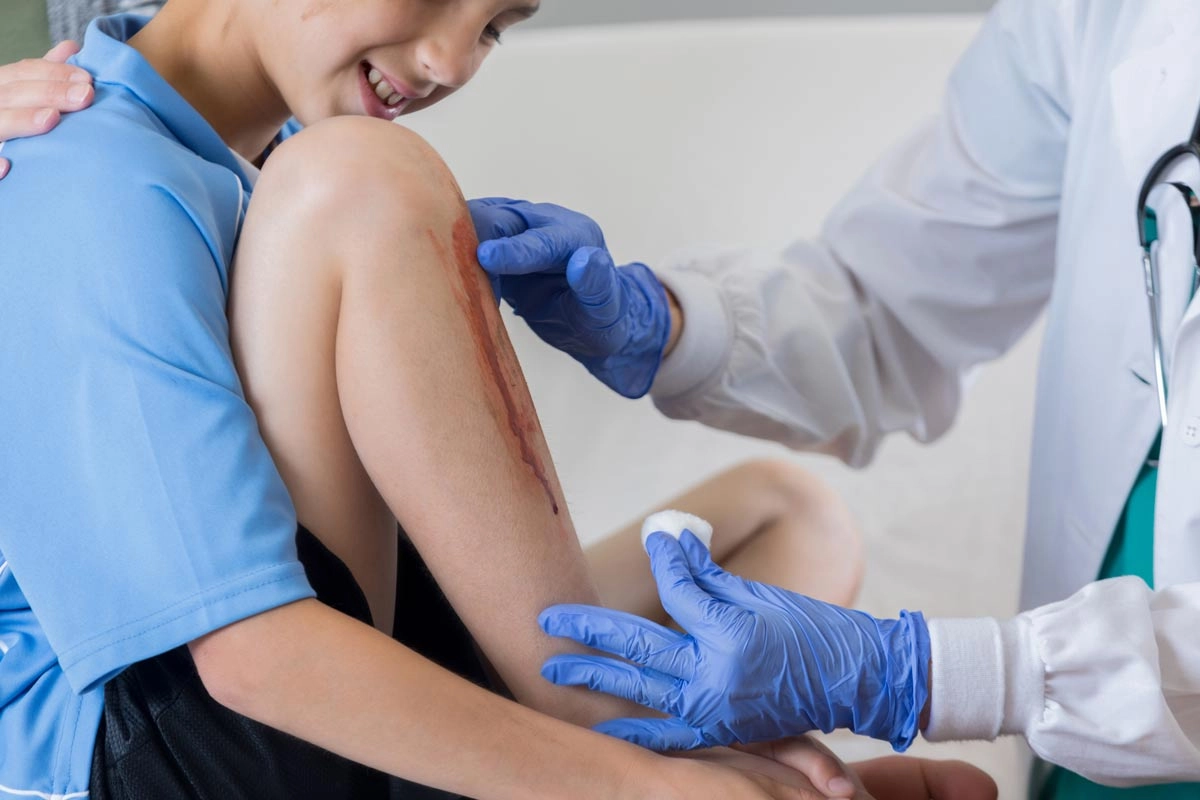Fractures | Sprains | Bruising
Fractures

Bones are rigid, but they do bend or “give” somewhat when an outside force is applied. However, if the force is too great, the bones will break, just as a plastic ruler breaks when it is bent too far.
According to the American Academy of Orthopaedic Surgeons, how bad a fracture is usually depends on the force that caused the break. If the force that caused the bone to break is less, such as a fall, then the bone may crack rather than break all the way through. If the force is very high, such as in an automobile crash or a gunshot, then the bone may shatter.
If the bone breaks in such a way that bone fragments stick out through the skin, or a wound goes all the way down to the broken bone, the fracture is called an “open” fracture. This type of fracture is very serious because once the skin is broken, it may cause an infection in both the wound and the bone.
Common Types of fractures Include:
Stable Fracture
The broken ends of the bone line up and are barely out of place.
Open | Compound Fracture
The skin may be pierced by the bone or by a blow that breaks the skin at the time of the fracture. The bone may or may not be visible in the wound.
Oblique Fracture
This type of fracture has a break that runs across the bone at an angle.
Comminuted Fracture
In this type of fracture, the bone shatters into three or more pieces.
The Most Common Causes of Fractures are:
Symptoms:
Many fractures are very painful and may prevent you from moving the injured area. Other common symptoms include:
Sprains
A sprain is an injury to a ligament. Ligaments are a tough band of tissue that connects two or more bones at a joint. When a sprain happens, one or more ligaments are stretched or torn.
For more information about sprains, go to the National Institute of Health’s website by clicking on the learn more button below.
Is a Sprain an Emergency?
Sprains can be painful, but a visit to an emergency room is not usually required. In fact, mild sprains respond well to home treatment. However, if the sprain is severe, other injuries like fractures can also be present.
Go to urgent care if:
What does a sprain look and feel like?
For more information about ankle sprains, go to Healthline’s website by clicking on the learn more button below.
What Causes Sprains?
Sprains occur when a joint is twisted or turned awkwardly, stretching or tearing the ligament holding the bones together. Ankle sprains are common. As you walk or run on uneven ground or make a quick turn, you can roll your foot inward or, more commonly, outward at the ankle.
Other Joints can Become Sprained by:
- Twisting a knee
- Falling on an arm and twisting a wrist, elbow, or shoulder
- Spraining a thumb through overextension
- Landing so that the joint is stretched beyond its normal limit
Diagnosing a Sprain
A healthcare provider examines the injured limb, touching the sprained area to determine tenderness. Your range of motion is also checked to see if any positions cause pain or discomfort.
If you have a severe sprain, your healthcare provider may recommend one or more imaging scans such as X-rays or CT scans.
Treatment
You may remember this from a first aid course. It is a good approach for almost any sprain.
*NOTE – if you suffer from diabetes, decreased sensation, or have vascular disease, talk to your healthcare provider before putting ice on the injured area.
The R-I-C-E approach used for two to three days after the sprain can bring down the swelling and ease the pain discomfort. If under the care of a doctor, follow your physician’s instructions.









